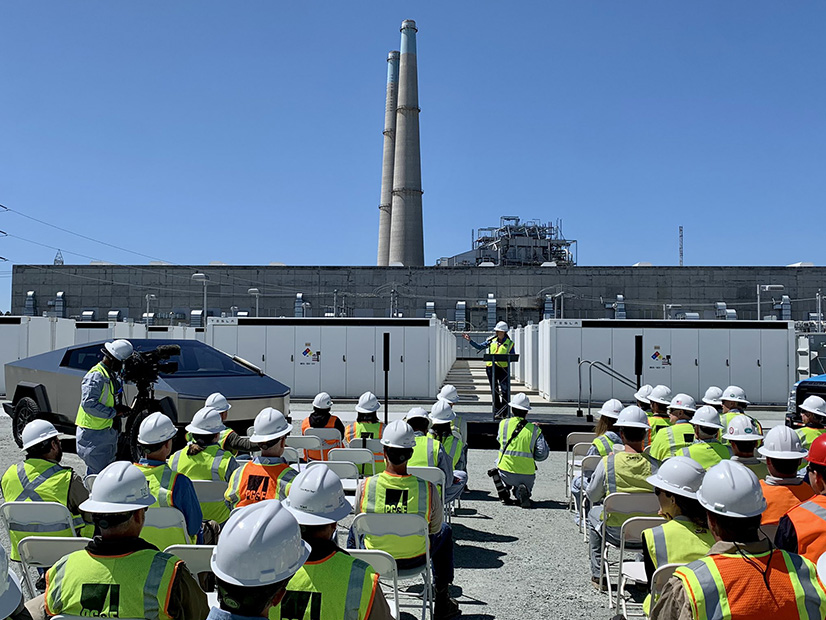
Pacific Gas and Electric said Wednesday it plans to achieve carbon neutrality by 2040 and become “climate positive” by 2050, taking in as much carbon as it produces through carbon capture and other means while continuing to supply natural gas to customers.
“As recent events have made clear, California is not just on the front line for taking action on climate change, we’re also at the front line of its destructive effects,” CEO Patti Poppe said in a video announcement. “We cannot accept that. We can’t be content with simply adapting to those harms. We have to slow them down. We need to put that climate machine in reverse and begin undoing the damage.”
With its plan, PG&E joins the ranks of large investor-owned utilities that have made climate pledges, including Xcel Energy, which committed in December 2018 to provide its customers with 100% carbon-free energy by 2050, and Arizona Public Service, which did the same in January 2020.
Publicly owned utilities that have made similar commitments include the Sacramento Municipal Utility District, which promised to eliminate all greenhouse gas emissions from its electric generation by 2030. The Los Angeles Department of Water and Power is seeking to rely on 100% renewable power by 2045.
Under Senate Bill 100, California utilities must supply retail customers with 100% carbon-free resources by 2045. Other measures require the state to reduce its greenhouse gas emissions to 40% below 1990 levels by 2030 and 80% below 1990 levels by 2050.
PG&E’s ambitious plan is short on many details but lays out a broad strategy for meeting its goals.
By 2030, the company said, its generation mix will consist of 70% renewable resources such as wind and solar.
Promoting adoption of electric vehicles is a cornerstone of its carbon-reduction efforts.
“PG&E plans to be the industry’s global model by fueling at least 3 million electric vehicles in its service area by 2030 — leading to a cumulative reduction of at least 58 million metric tons of carbon emissions,” it said in a news release. The company also wants 2 million EVs to be able to send electricity back to the grid, “allowing EVs to be a cornerstone of energy reliability and resilience efforts.” It has begun vehicle-to-grid pilot programs with approval from the California Public Utilities Commission.
Another 48 MMTs of carbon reduction could come from building electrification and replacement of gas appliances, it said.
By 2030, PG&E expects renewable natural gas to make up 15% of its gas supply serving residential and commercial customers, and it said it is launching a pilot program to “maximize readiness for hydrogen blending.” Converting large industrial and commercial users to a cleaner natural gas supply will cut 2.5 MMT, it said.
“PG&E’s vision is to evolve the gas system to be an affordable, safe and reliable net zero energy delivery platform,” the utility’s news release said. “To make the transition, PG&E expects a diverse mix of resources to be available — from broad electrification to cleaner fuels such as renewable natural gas and hydrogen to nature-based solutions and carbon capture, storage and utilization.”
Direct-air carbon capture and underground sequestration will offset greenhouse gas emissions from thermal generation and other sources, PG&E said in its plan.
“With increasing electricity demand from buildings and transportation, California must also substantially invest in thermal generation with clean fuels and/or carbon capture and storage to maintain reliability,” it said.
The California Public Utilities Commission would have to approve the programs, including the ratepayer costs at a time of soaring utility bills. PG&E also has announced ambitious plans to bury 10,000 miles of power lines to avoid wildfire ignitions, the massive cost of which must still be determined.
PG&E is planning to close its Diablo Canyon nuclear power plant by 2025, but the utility said it expects to be able to meet its clean energy goals without the plant. The office of Gov. Gavin Newsom recently petitioned the Biden administration to make funds available to keep the plant open to maintain grid reliability while providing a large portion of the state’s carbon-free energy.
